The Philharmonic House of Design

It's almost out of vogue to champion the merits of a hidden install in today's home theater magazines. As technology becomes more and more efficient and form factors shrink, blending interior design and technology has never been easier. At this year's Philharmonic House of Design project, however, sleek flat panels and discreet in-wall speakers were just the first step in creating a home where technology plays as important a role in the overall design as the gorgeous old-world Spanish fittings.
The Philharmonic House of Design is a traveling home showcase that happens once a year, featuring cutting-edge interior design from some of California's top designers. This year, 19 different designers descended upon the location, a 8,700-square-foot new home construction in the exclusive Village of Covenant Hills in the Ladera Ranch community in Southern California. Each designer was given his or her own room to design, creating an opulent dream home with breathtaking views of the surrounding hillside.

Many of the past Philharmonic House of Design projects have included technology in the form of a simple dedicated theater or media room. But this time, technology became part of the interior design planning itself. In fact, the technology, like the Spanish Revival décor, is a theme that unites the various rooms in this home. Rather than simply one room with technology included, this year, the home got a head-to-toe whole-home infusion of audio and video, complete with carefully labeled and organized structured wiring.

Ken Hoffman and his partner Cesar Guerrero, of Digital Home Design in Irvine, California, had worked very closely with several ASID (American Society of Interior Designers) members, who began encouraging him to get involved. "As high-end clients bring in high-end interior designers, they are asking to incorporate technology into the design," says Hoffman. "This pushes interior designers to learn more about technology and what is actually possible. If a project isn't coordinated well and interior designers, architects, and installers work in a vacuum, then the home will seem disjointed. I think we've accomplished quite the opposite in the Philharmonic House of Design."
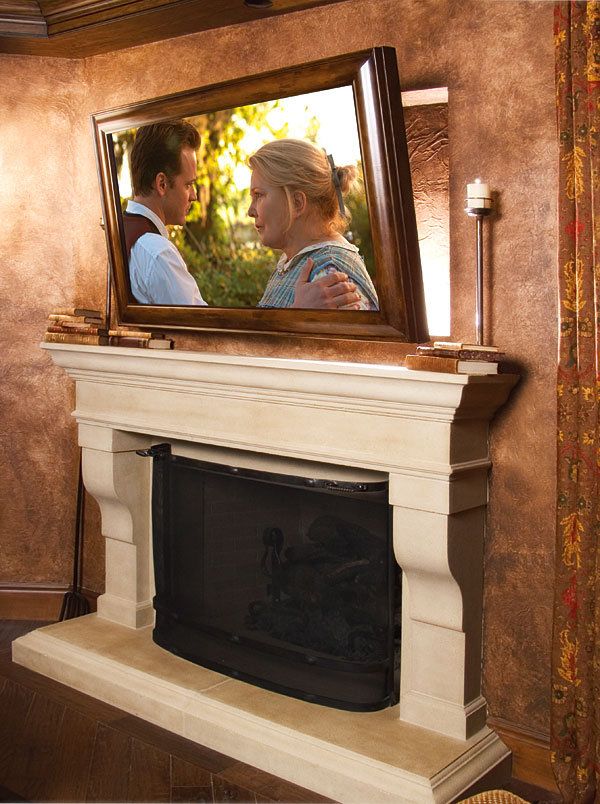
Hoffman and his team began wiring the home for technology back in December of 2005, having only four months to do the entire installation. He began meeting with each of the interior designers to ascertain their technological needs. Most of them, Hoffman states, had no idea the extent of customization that was available to them. "It was an interesting experience working with so many interior designers," says Hoffman. "We tried to identify what the vision of the room was and how technology could compliment the design and the décor of the room."
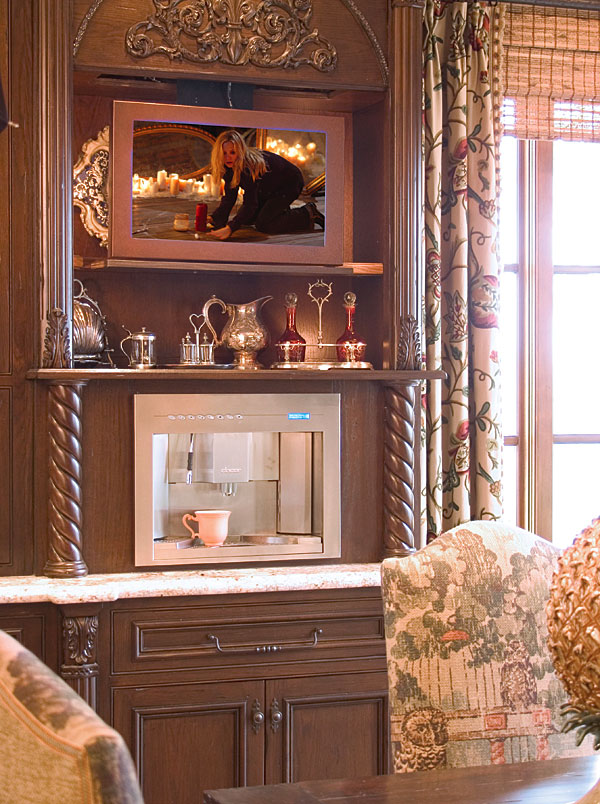
As you walk into the Philharmonic House of Design, the first thing you notice is the gorgeous family room just off the kitchen with bright sunlight washing in. The eye then goes to the fireplace and the 61-inch plasma, framed to match the wood furnishings in the room, one of many custom solutions to follow. But the real wow factor was the X-arm, an innovative robotic display mounting system by CLO Systems that lets you control the angle of the plasma. If the light changes throughout the day, say, or you switch seats, the plasma can be tilted left, right, up, or down for the best viewing angles. When Hoffman asked me to identify the speakers in the room, I couldn't. They were completely invisible speakers in a 5.1 array. The five speakers and the subwoofer were in-wall models that had been drywalled over and painted to match the rest of the ceiling or wall.
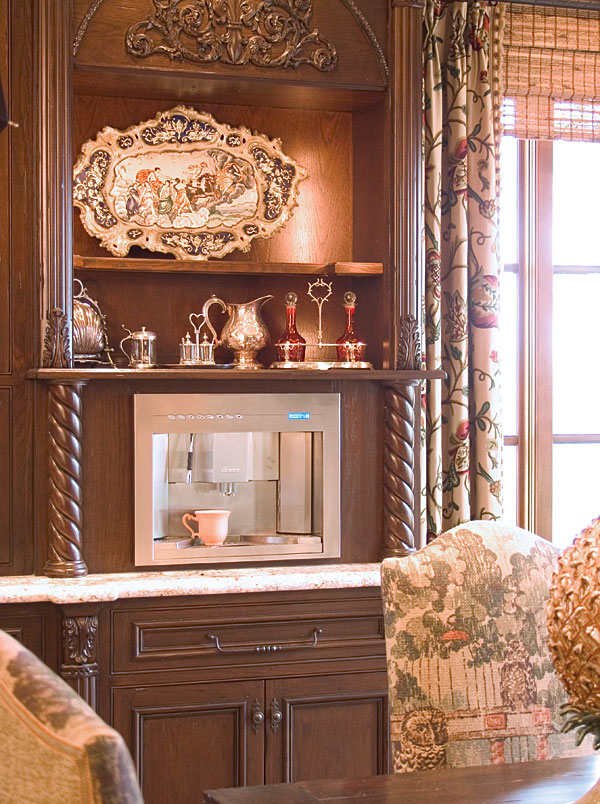
Moving on to the kitchen, I was tempted to ask myself, "Where's the beef?" But, before I could get the words out, Hoffman had pressed a button on a remote, and out of gorgeous custom cabinetry above the countertop, two Sharp LCD panels descended. Of course, I only knew it was a Sharp because I asked—Hoffman had custom-framed these LCDs, again, to match the woodwork. He says that such custom bezels can add about $1,000 to the cost of the display.
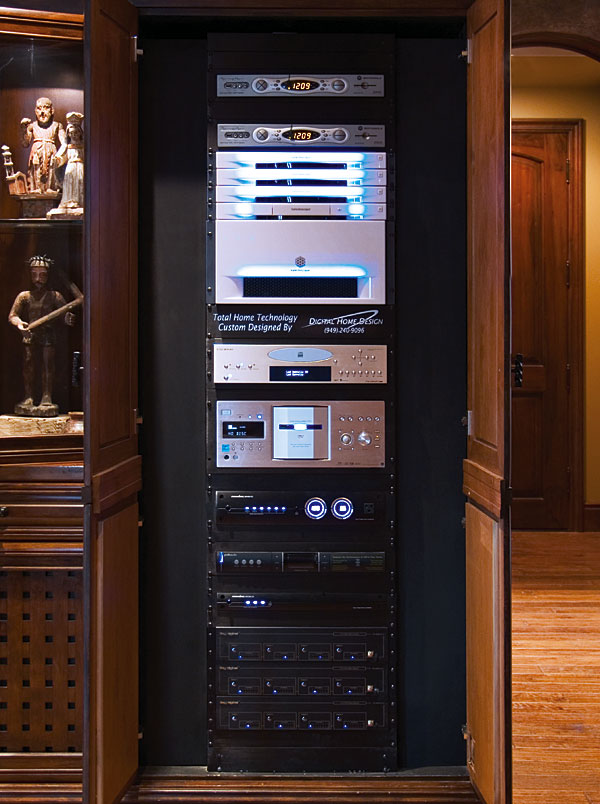
We then traveled downstairs to the wine cellar and secondary dining space with a completely customizable and interactive proprietary touchpanel on the wall, whose sole function is to monitor the wine cellar. This amazing little bit of custom installation lets you scan the bar code of the wine, which then enters all of the details, the name, the year, the type of wine, and even what the wine might go well with into the hard drive. You can then search by wine type—champagne, syrah, merlot—or any other criteria. The touchpanel even monitors the temperature of the wine cellar.
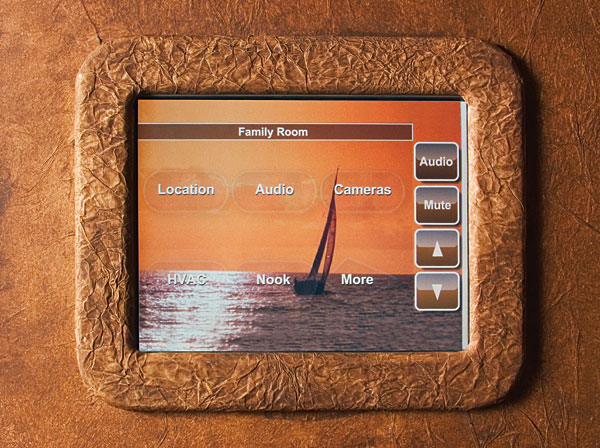
On the second story, a full-blown media room features a 7-foot-wide Stewart Filmscreen, which offers an amazing image, even with some ambient light. The Vidikron two-chip DLP projector fires from the custom coffee table/ottoman. When the screen is not in use, a gorgeous Media Decor HideandChic motorized 7-foot-wide art screen of a Whiteface Mountain artwork replica silently rolls down over the screen. "Once the other interior designers saw this, they all wanted one in their respective room," says Hoffman. A proprietary quad processor allows the Vidikron to project four separate 16:9 images, with four different cable-box feeds so homeowners can watch PIP programming on the big screen. An IP-based NetStreams automation system allows easy access to the wholehouse system and includes custom graphics based on the environment. For movie-watching duties, a Kaleidescape DVD server lets potential homeowners store and access their DVD collections at the touch of a button.
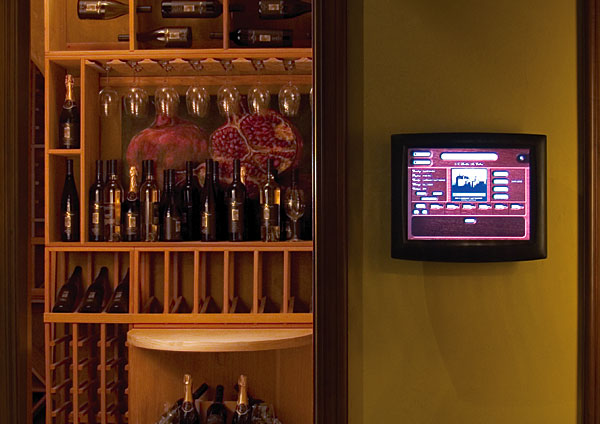
Hoffman and his team worked around the clock to meet the opening day in the third week in April. All the different trades converged on the house at one time, including designers, cabinet makers, plumbers, and the A/V crew, which made for an extremely hectic work schedule. "Working during the day, we had to park several blocks away and trudge equipment up the hill," says Hoffman. "That's why we put in 12-hour nights.
"I think by participating, we were able to show off what can be done with high-level technology," says Hoffman. "By showing potential clients how clean the wiring can be, how you can actually hide an LCD behind a mirror in your bathroom, and how you don't have to be stuck with the oftentimes unattractive industrial design of products, we make our industry more user friendly."
Entertainment, comfort, and security are perfectly integrated throughout the kitchen, the bath, intimate spaces, entertainment areas, patios, and the spa and pool area. Donations from the public benefit the wide range of music and education programs that the Philharmonic Society provides.
Credits:
Designers participating are Lori Hankins, Sheldon Harte, Elizabeth Burris, Adriel Cogdal, Jason Titus, Michael Fullen, Steve Stein, Frank Pitman, Wendy Miller, Marvin Stark and Kerry Harker, Anne Figueroa, Chris Kittrell, Beth Whitlinger, Barbara Coulter-Phillips, Susan Wesley, Gayle Lee, and Joan Wilson. Built by custom homebuilder David Mulvaney of Mulvaney & Co. Installation by Digital Home Design. Photography by Martin King and Stephan Brown.
How It Works For You
Think big. Just because a plasma or speaker doesn't fit with your décor, if you have a truly innovative interior designer or custom installer, you can have custom solutions for your particular environment.
Don't miss out on technology. If you think you don't want audio/video capability in your home because you don't like the way it looks, consider options like in-wall speakers that can be covered with drywall and painted to match your décor or an automated screen that covers plasmas or projection screens with world-renowned artwork.
- Log in or register to post comments


























































